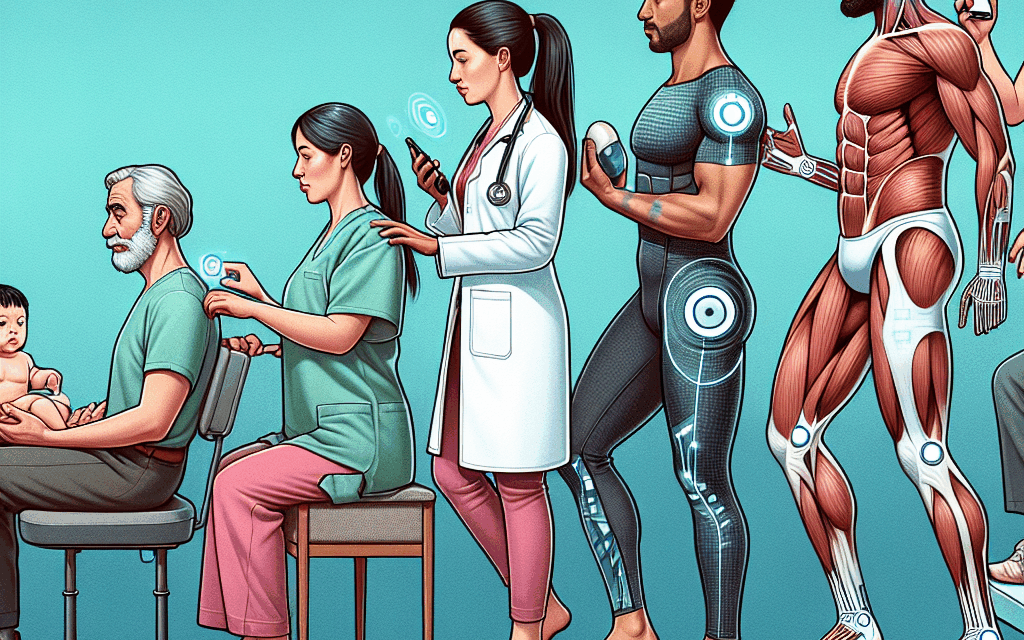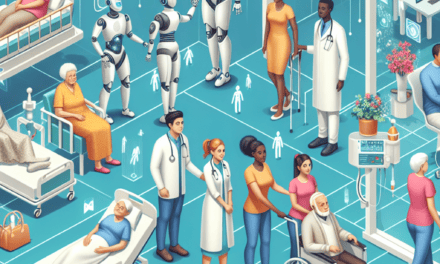The Evolution of Physiotherapy: Embracing Virtual Care and Innovative Technologies
Physiotherapy has undergone significant transformations over the years, evolving from traditional hands-on techniques to incorporating advanced technologies and virtual care solutions. This evolution has been driven by the need for more accessible, efficient, and patient-centered care. In this article, we will explore the journey of physiotherapy, focusing on five key subtopics: the historical context of physiotherapy, the rise of telehealth, the integration of wearable technology, the role of artificial intelligence, and the future of physiotherapy in a digital world.
1. The Historical Context of Physiotherapy
Physiotherapy, as a profession, has roots that can be traced back to ancient civilizations. The practice has evolved significantly over the centuries, shaped by cultural, scientific, and technological advancements.
1.1 Ancient Practices and Foundations
The origins of physiotherapy can be found in ancient Greece and China, where physical methods were used to treat injuries and ailments. The Greeks utilized massage and hydrotherapy, while the Chinese practiced acupuncture and manual therapy. These early forms of treatment laid the groundwork for modern physiotherapy.
1.2 The Birth of Modern Physiotherapy
The formal establishment of physiotherapy as a profession began in the early 20th century. The need for rehabilitation services surged during World War I, as many soldiers returned with injuries requiring extensive rehabilitation. In 1917, the first physiotherapy school was established in the United States, marking a significant milestone in the profession’s development.
1.3 The Evolution of Techniques and Approaches
Throughout the 20th century, physiotherapy techniques evolved, incorporating new scientific knowledge and research. The introduction of electrotherapy, ultrasound, and other modalities expanded the physiotherapist’s toolkit. Additionally, the profession began to adopt a more holistic approach, focusing on the patient’s overall well-being rather than just physical symptoms.
1.4 Professional Recognition and Regulation
As physiotherapy gained recognition, professional organizations emerged to establish standards and regulations. The World Confederation for Physical Therapy (WCPT) was founded in 1951, promoting the profession globally. This recognition has led to increased educational requirements and professional standards, ensuring that physiotherapists are well-equipped to provide high-quality care.
1.5 The Shift Towards Evidence-Based Practice
In recent decades, there has been a significant shift towards evidence-based practice in physiotherapy. This approach emphasizes the use of research and clinical evidence to guide treatment decisions. Physiotherapists are now expected to stay updated on the latest research findings, ensuring that their practice is informed by the best available evidence.
2. The Rise of Telehealth in Physiotherapy
The advent of telehealth has revolutionized the way physiotherapy services are delivered. This section explores the rise of telehealth, its benefits, challenges, and its impact on patient care.
2.1 Understanding Telehealth
Telehealth refers to the use of digital communication technologies to provide healthcare services remotely. In physiotherapy, this can include video consultations, remote monitoring, and digital exercise programs. The COVID-19 pandemic accelerated the adoption of telehealth, as many healthcare providers sought to maintain continuity of care while minimizing in-person visits.
2.2 Benefits of Telehealth in Physiotherapy
- Increased Accessibility: Telehealth allows patients in remote or underserved areas to access physiotherapy services without the need for travel.
- Convenience: Patients can schedule appointments at their convenience, reducing the time and effort required for in-person visits.
- Continuity of Care: Telehealth enables physiotherapists to monitor patients’ progress and adjust treatment plans in real-time.
- Cost-Effectiveness: Remote consultations can reduce overhead costs for clinics and lower transportation costs for patients.
2.3 Challenges and Limitations
Despite its many benefits, telehealth in physiotherapy also presents challenges. Some of the key limitations include:
- Technical Barriers: Not all patients have access to reliable internet or the necessary technology to participate in telehealth sessions.
- Limited Hands-On Assessment: Certain assessments and treatments require physical interaction, which can be challenging in a virtual setting.
- Regulatory Issues: Different regions have varying regulations regarding telehealth, which can complicate service delivery.
2.4 Case Studies: Successful Telehealth Implementation
Several case studies highlight the successful implementation of telehealth in physiotherapy. For instance, a study conducted by the University of Toronto found that patients receiving telehealth physiotherapy reported similar outcomes to those receiving in-person care. Another case study from Australia demonstrated that telehealth significantly improved access to physiotherapy for rural patients, leading to better health outcomes.
2.5 The Future of Telehealth in Physiotherapy
As technology continues to advance, the future of telehealth in physiotherapy looks promising. Innovations such as virtual reality (VR) and augmented reality (AR) may enhance remote assessments and treatments, providing physiotherapists with new tools to engage patients effectively. Additionally, ongoing research will likely address current challenges, making telehealth an integral part of physiotherapy practice.
3. The Integration of Wearable Technology
Wearable technology has emerged as a game-changer in physiotherapy, offering new ways to monitor patient progress and enhance treatment outcomes. This section delves into the role of wearable devices in physiotherapy.
3.1 Overview of Wearable Technology
Wearable technology includes devices such as fitness trackers, smartwatches, and specialized sensors that monitor various health metrics. These devices can track physical activity, heart rate, sleep patterns, and more, providing valuable data for physiotherapists.
3.2 Benefits of Wearable Technology in Physiotherapy
- Real-Time Monitoring: Wearable devices allow physiotherapists to monitor patients’ progress in real-time, enabling timely adjustments to treatment plans.
- Enhanced Patient Engagement: Patients can take an active role in their rehabilitation by tracking their progress and setting personal goals.
- Data-Driven Insights: The data collected from wearables can provide physiotherapists with insights into patients’ behaviors and adherence to treatment plans.
- Remote Monitoring: Wearable technology facilitates remote monitoring, allowing physiotherapists to provide ongoing support without the need for frequent in-person visits.
3.3 Case Studies: Successful Use of Wearable Technology
Several studies have demonstrated the effectiveness of wearable technology in physiotherapy. For example, a study published in the Journal of Rehabilitation Research and Development found that patients using wearable devices during rehabilitation after knee surgery showed improved outcomes compared to those who did not use such technology. Another case study involving stroke patients revealed that wearable sensors helped track movement patterns, leading to more personalized rehabilitation strategies.
3.4 Challenges and Considerations
While wearable technology offers numerous benefits, there are challenges to consider:
- Data Privacy: The collection and storage of health data raise concerns about patient privacy and security.
- Device Accuracy: The accuracy of wearable devices can vary, potentially leading to misleading data.
- Patient Compliance: Ensuring that patients consistently wear and use the devices can be a challenge.
3.5 The Future of Wearable Technology in Physiotherapy
The future of wearable technology in physiotherapy is bright, with ongoing advancements in sensor technology and data analytics. As devices become more sophisticated, they will provide even more detailed insights into patients’ health and progress. Additionally, the integration of artificial intelligence may enhance the ability to analyze data and personalize treatment plans further.
4. The Role of Artificial Intelligence in Physiotherapy
Artificial intelligence (AI) is transforming various industries, and physiotherapy is no exception. This section explores how AI is being integrated into physiotherapy practice.
4.1 Understanding Artificial Intelligence
AI refers to the simulation of human intelligence in machines that are programmed to think and learn. In healthcare, AI can analyze vast amounts of data, identify patterns, and make predictions, offering valuable support to healthcare professionals.
4.2 Applications of AI in Physiotherapy
- Predictive Analytics: AI can analyze patient data to predict outcomes and identify those at risk of complications, allowing for proactive interventions.
- Personalized Treatment Plans: AI algorithms can help create tailored rehabilitation programs based on individual patient data and preferences.
- Virtual Assistants: AI-powered virtual assistants can provide patients with guidance on exercises and rehabilitation protocols, enhancing engagement.
- Data Analysis: AI can process large datasets from wearable devices and other sources, providing physiotherapists with actionable insights.
4.3 Case Studies: AI in Action
Several case studies illustrate the successful application of AI in physiotherapy. For instance, a study published in the journal “Frontiers in Sports” demonstrated that an AI algorithm could accurately predict recovery times for patients undergoing rehabilitation after surgery. Another case study involved the use of AI-powered virtual assistants to guide patients through home exercise programs, resulting in improved adherence and outcomes.
4.4 Challenges and Ethical Considerations
While AI holds great promise, there are challenges and ethical considerations to address:
- Data Quality: The effectiveness of AI relies on high-quality data; poor data can lead to inaccurate predictions.
- Bias in Algorithms: AI algorithms can inadvertently perpetuate biases present in the training data, leading to unequal treatment outcomes.
- Patient Trust: Patients may be hesitant to trust AI-driven recommendations, emphasizing the need for human oversight.
4.5 The Future of AI in Physiotherapy
The future of AI in physiotherapy is promising, with ongoing research and development aimed at enhancing its applications. As AI technology continues to evolve, it will likely play an increasingly integral role in improving patient outcomes and streamlining physiotherapy practice.
5. The Future of Physiotherapy in a Digital World
The integration of virtual care and innovative technologies is shaping the future of physiotherapy. This section explores the potential developments and trends that may define the profession in the coming years.
5.1 The Shift Towards Hybrid Models of Care
The future of physiotherapy is likely to involve hybrid models that combine in-person and virtual care. This approach allows physiotherapists to provide personalized care while leveraging the benefits of technology. Patients may receive initial assessments in person, followed by virtual follow-ups and remote monitoring.
5.2 Emphasis on Patient-Centered Care
As technology continues to advance, the focus on patient-centered care will remain paramount. Physiotherapists will need to prioritize patient preferences and values, ensuring that treatment plans align with individual goals. This may involve incorporating patient feedback into treatment decisions and utilizing technology to enhance engagement.
5.3 Ongoing Education and Training
To keep pace with technological advancements, physiotherapists will need ongoing education and training. This includes staying updated on the latest research, learning to use new technologies, and understanding how to integrate them into practice effectively. Professional development programs will play a crucial role in equipping physiotherapists with the skills needed for the future.
5.4 Collaboration with Other Healthcare Professionals
The future of physiotherapy will likely involve increased collaboration with other healthcare professionals. Interdisciplinary teams can provide comprehensive care, addressing the diverse needs of patients. Physiotherapists may work alongside physicians, occupational therapists, and mental health professionals to create holistic treatment plans.
5.5 The Role of Research and Innovation
Research and innovation will continue to drive the evolution of physiotherapy. Ongoing studies will explore the effectiveness of new technologies and treatment approaches, ensuring that the profession remains evidence-based. Additionally, partnerships with technology companies may lead to the development of innovative solutions that enhance patient care.
Conclusion
The evolution of physiotherapy has been marked by significant advancements in technology and care delivery models. From its historical roots to the integration of telehealth, wearable technology, and artificial intelligence, the profession is embracing a digital future. As physiotherapists adapt to these changes, they will continue to prioritize patient-centered care, collaboration, and ongoing education. The future of physiotherapy holds great promise, with the potential to improve patient outcomes and enhance the overall healthcare experience.
In summary, the journey of physiotherapy reflects a commitment to innovation and excellence in patient care. By embracing virtual care and innovative technologies, physiotherapists are well-positioned to meet the evolving needs of their patients in a rapidly changing healthcare landscape.





